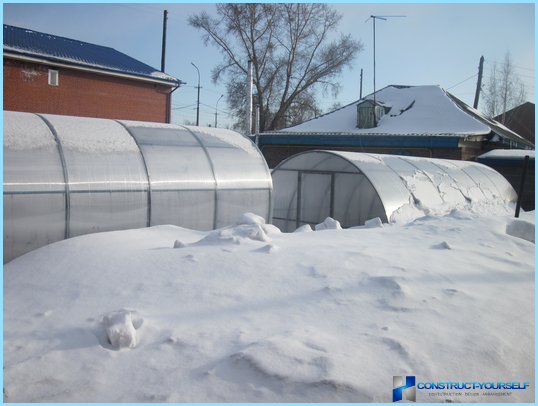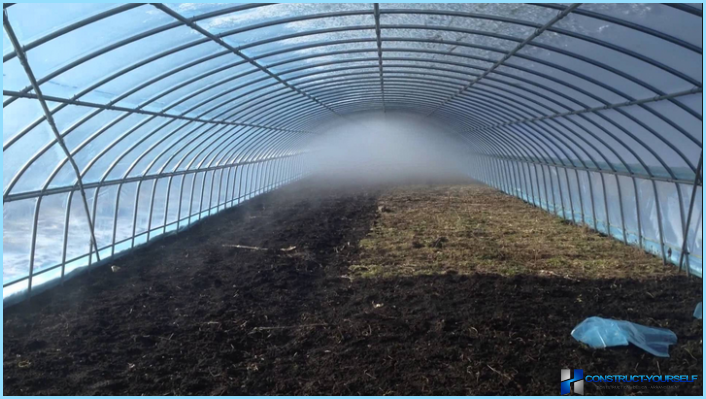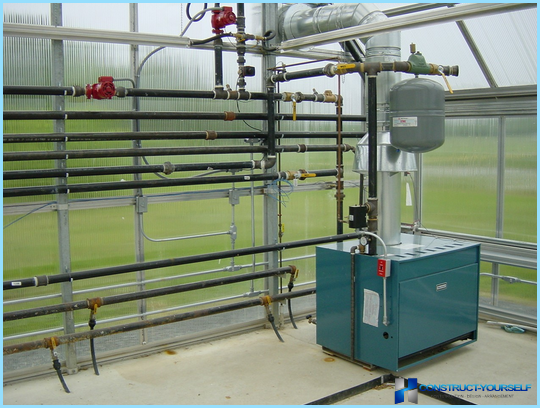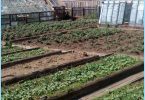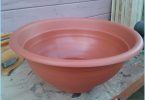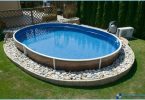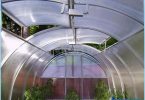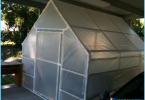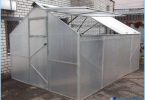The contents
The construction of winter greenhouses on the plot is a milestone in the practice of the gardener’s knowledge and experience in growing a variety of crops allow the harvest not only in the summer. However, you need to understand that the construction of winter greenhouses – an event that requires the knowledge, skills, thorough preparation of materials and sites for future buildings. Therefore it is useful to see some designs of winter greenhouses and helpful tips from experts that to facilitate this difficult, but very fun.
Determined by the type of structure ↑
To date, there is a lot of variety of options for the construction of winter greenhouses that in order to thoroughly describe the features and benefits of each of them, it would be to write a voluminous essay. Therefore, to the average person it is easier to understand the peculiarities of construction of winter greenhouses, let’s mention the most important differences between the main types of data structures.
The classic version of the construction of winter greenhouses have the following options differences.
Functional features ↑
In the winter greenhouses grow a variety of crops. It can be not only the traditional vegetables, fruits, flowers and mushrooms. Will be quite interesting to collect winter harvest of exotic fruits and citrus crops. From that plans to grow in the greenhouse will depend on the sequence in the construction and arrangement of the internal space of the greenhouse.
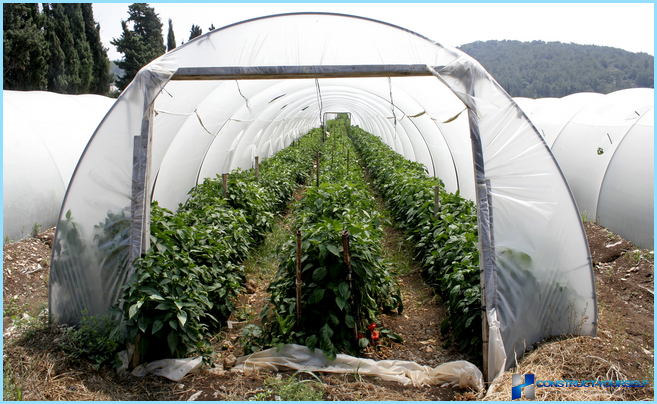
The layout of the buildings ↑
The construction of a winter heated greenhouses are divided into three types: embedded in the ground, built on ground level, mounted on a specially equipped elevations (e.g. garage or shed).
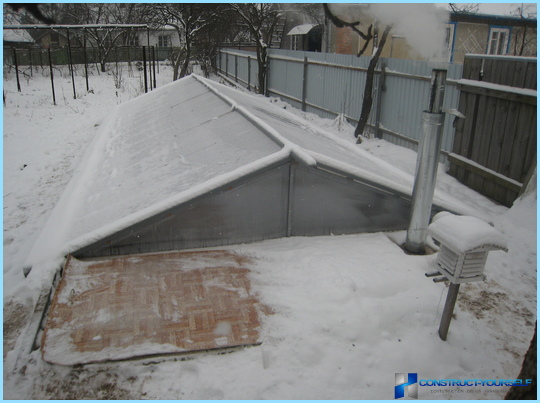
The choice of building materials ↑
Depending on the type of construction materials used. Winter greenhouses can be divided into several groups:
- built of brick;
- constructed from wood;
- composed of metal or PVC profile;
- glazed or covered with polycarbonate;
- combination options.
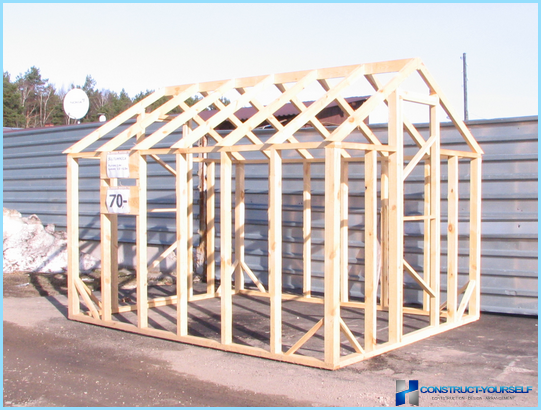
Features planting ↑
The construction of winter greenhouses should be in a position to build the future most of the day under direct sunlight. Because they are so necessary for normal growth and development of plants. Also a good location for the construction of the greenhouse will help to save quite a large sum of money that would have spend on additional lighting. The best location for building a greenhouse from West to East. It is this approach that maximize the use of useful properties of such poor in the bright light of the winter sun.
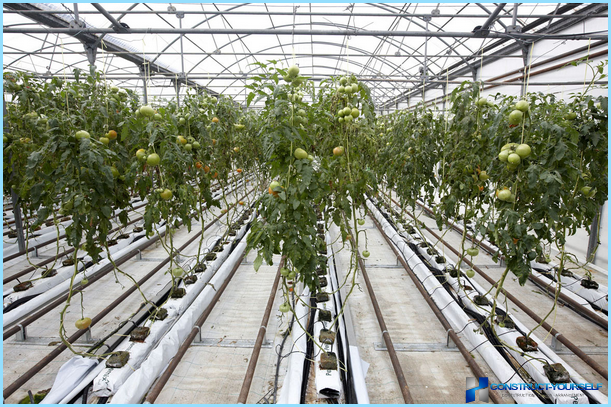
Select the type of heating ↑
Correctly chosen and correctly mounted heating in the winter greenhouse – the key to creating a favourable climate for the successful growth and development of plants. Installation of the heating system is quite time-consuming and complicated procedure, and its implementation must be approached with knowledge of the matter.
There is a great number of ways to heat a winter greenhouse. Everyone has both positive and negative characteristics. Way of choosing the heating system for your greenhouse, be sure to consider the technological features of the specific building, climatic conditions of the area in which greenhouse is located and have the amount of money.
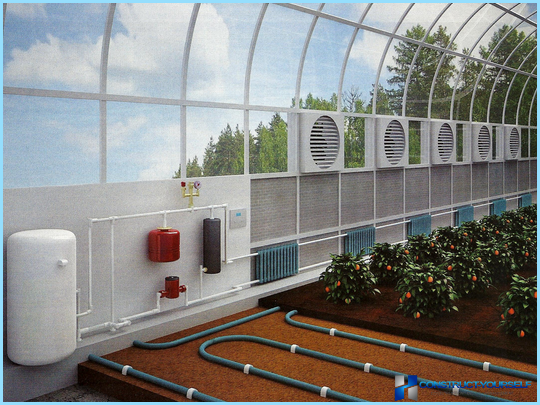
Consider in more detail the most common options for heating in greenhouses:
- Heated by the sun. This is the most affordable and absolutely not expensive way to create in the greenhouse at a comfortable temperature. But choosing this method, it is necessary to remember that in order to grow plants year-round, such heating may not be enough. ?Attention! In winter, heated by the sun can only be an additional source of heat in combination with more productive methods of heating.
- Boatplane. In the greenhouse you can create a comfortable microclimate using natural heat generated by bio-waste that fertilize the earth. Manure, mullein, bird droppings – waste products of animals and birds not only well saturate the land with nutrients, but also in the decomposition process actively release heat, helping to increase the air temperature in the greenhouse. The disadvantage of such a method of heating, as when solar heating is insufficient heat in the winter.
- Heating electric the most traditional way of heating. Very attracted to the variety of electrical heating and the rate at which they warm the air inside the greenhouse. Heaters, heaters, infrared heaters, everyone can choose the most suitable option. ?Attention! When choosing this method of heating is necessary to be prepared for a rather impressive bills for consumed electricity.
- Heating air type. To arrange this method of heating is necessary at the stage of laying the Foundation. Design features heating and ventilation devices require their installation in the supporting medium and the top of the greenhouse. This type of heating requires a professional approach to installation and if the construction of the greenhouse has already been done, the arrangement of the air heating require a lot of rework.
- Heated with gas. Convenient, efficient way of heating the greenhouse, which involves the construction of gas heaters and special ventilation system.
- Heating stove. Profitable in economic terms, but rather fire-hazardous method of heating interior space of the structure. Using a variety of materials as fuel (firewood, coal, wood waste) you can very quickly heat the oven to the desired temperature, but the hot wall furnace may be the source of at least burns as maximum fire.
Material selection for construction of winter greenhouses ↑
Covering materials of greenhouse are selected on the following criteria:
- custom design features a winter greenhouse;
- good throughput sunlight;
- resistance to atmospheric phenomena;
- the ability to maintain the structure and integrity even with frequent temperature changes;
- resistance to physical stress;
- the ease and simplicity of installation;
- low cost;
- the duration of operation.
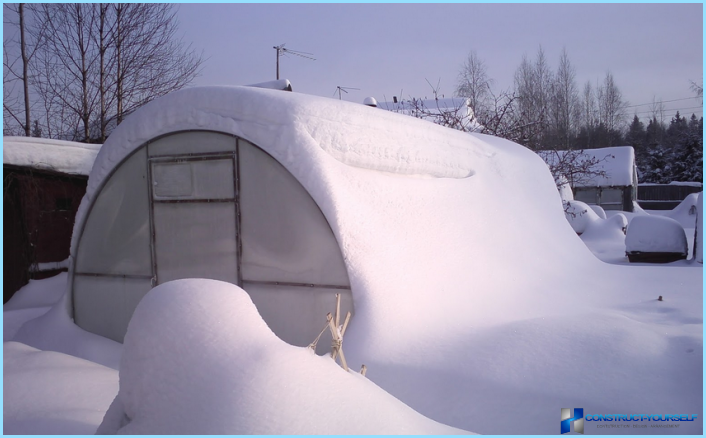
Consider in more detail the most common options for construction of winter greenhouses.
Glass ↑
This material was previously used as the main form of coverage for greenhouse. Glass is perfectly combined with wood and metal. Glass surfaces offer good light transmission and thermal insulation properties. However, today, glass-like finish for greenhouses is losing its relevance. A large number of more modern, light, resistant to mechanical damage and most importantly inexpensive materials.
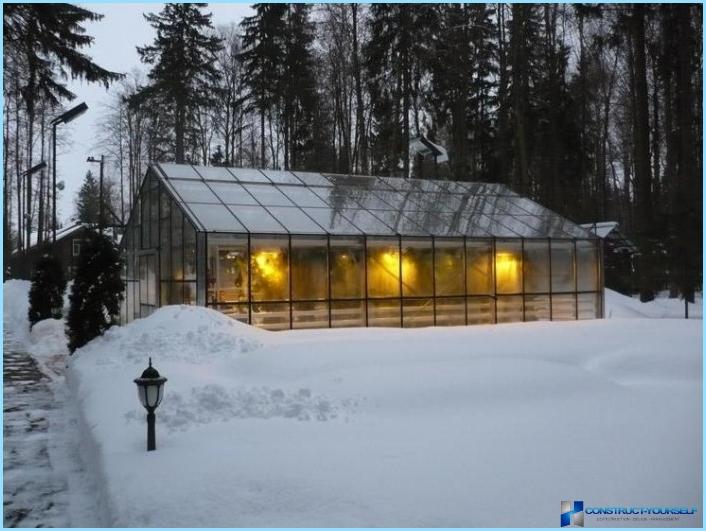
Polymeric materials ↑
This material is lightweight and good capacity to sunlight. However, the polymer panels very quickly lose its original appearance and in the absence of ventilation indoors on the surface of the greenhouse is formed excess moisture.
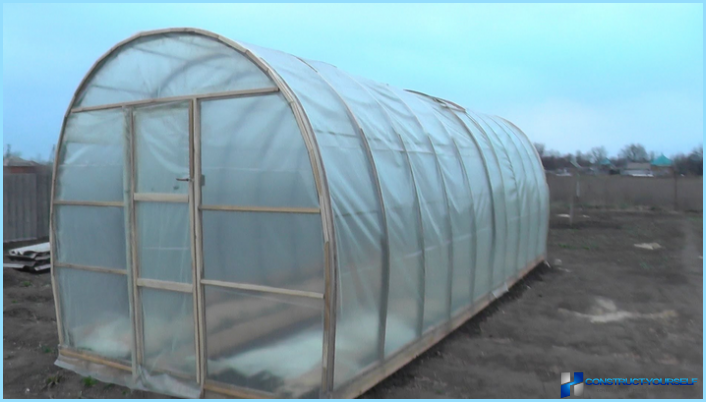
Polycarbonate ↑
This material is the best to date for the cladding structure of the winter greenhouse. He managed to combine the best qualities of glass and film.
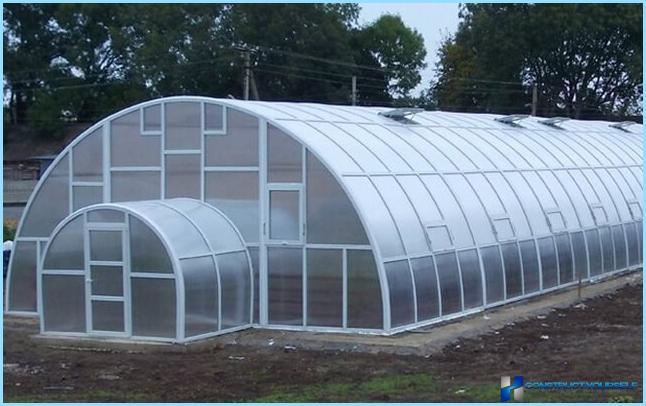
Projected greenhouse ↑
After the materials selected for construction and the size of the structure, you can begin to draft a future greenhouse. The easiest solution – using a plan to adjust it according to personal preferences and building conditions.
If you decide to make a plan for future greenhouses on their own should follow a certain algorithm of actions:
- schematically denoted by the site plan and determine the location of future buildings;
- calculate the size of winter greenhouse.
- develop a scheme of laying of engineering communications;
- separately denoted on the plan the type and size of the Foundation;
- calculate the required amount of materials for the construction of a roof of the winter greenhouse;
- think over the methods of attachment of all structural elements to each other.
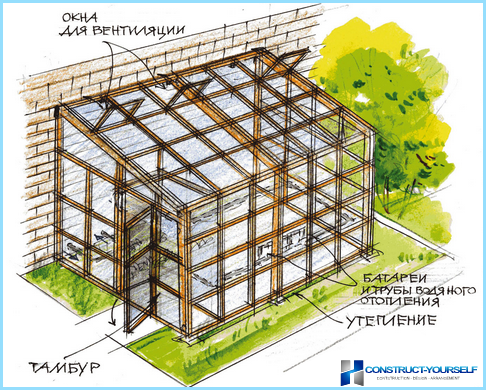
Constructed from polycarbonate greenhouses ↑
Polycarbonate is the best material for construction of winter greenhouses.
The list of advantages is quite wide:
- provides good bandwidth and receivenot sunlight;
- has a high rate of preservation of heat inside the room;
- lightness, flexibility and strength of the material allows very fast to build a greenhouse, which is able to perform its basic functions.
To build a winter greenhouse made of polycarbonate with their hands is quite real. The location of the future building is defined according to the basic rules of construction of greenhouses.
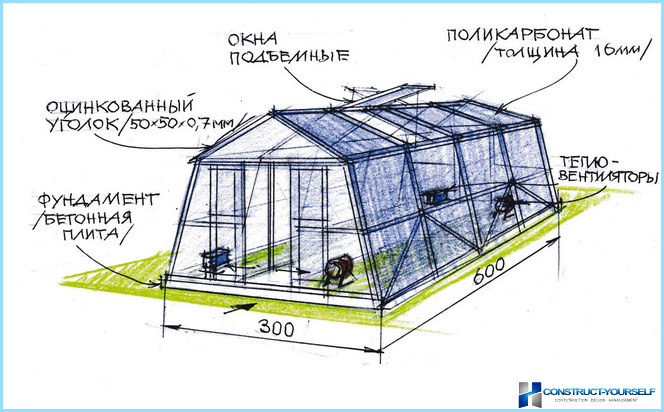
Lay the Foundation ↑
In order to lay the groundwork for future greenhouses can be used with a variety of building material: lumber, stone, brick. As practice shows, for winter greenhouses the best kind of Foundation is a continuous.
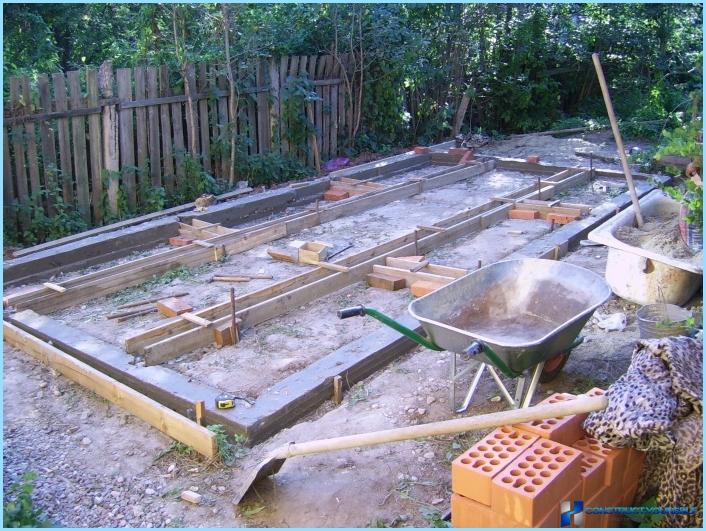
The sequence of operations of the Foundation:
- You must indicate on the ground the parameters of the future building.
- Dig a trench according to the markings. The depth of the ditch should not exceed 50 cm, and -20 cm width.
- On the side walls of the trench is mounted shuttering wood panel.
- The bottom of the trench is lined with sand, a layer not exceeding 30 cm.
- Be prepared by pouring the concrete mix.

The erected frame ↑
After the Foundation is completely frozen, it starts the construction phase of the frame.
The perimeter Foundation vertically mounted profiles for structural reinforcement, ribs are joined cruelty.
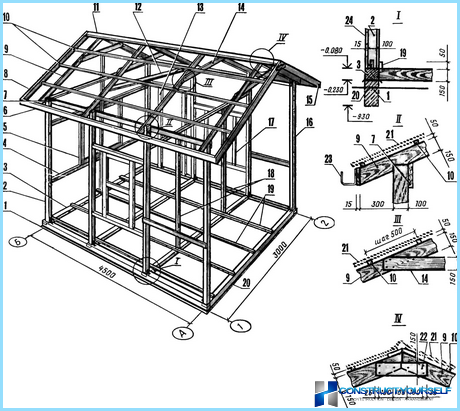
The finished frame winter greenhouse sheathed with polycarbonate sheets. They are very easy to cut with a saw or jigsaw. The panels are fixed to profile with screws.
To create a healthy microclimate inside the greenhouse and prevent the formation of condensation, do not forget about the arrangement of the air vents, Windows and doors.
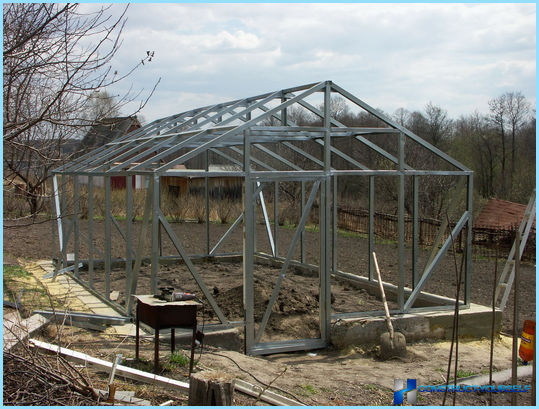
Conclusion ↑
The construction of winter greenhouses with their hands – a lesson difficult, but it is for someone who approaches the job responsibly and seriously. Enough to make some effort and spend a certain amount of time to have on your table year-round fresh vegetables and fruits.
How to build a stove for heating and winter greenhouses, we learn in the next video

